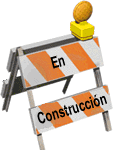|
| Dibujo técnico |
| jgjg | |
| Apuntes | |
| * | |
| * | |
| * | |
| * | |
| Ejercicios | |
| * Solución actividades Vistas | |
| * Solución actividades Isométrica | |
| * Solución actividades Caballera | |
| * | |
| Recursos | |
| * | |
| * | |
Dibujo Técnico
Notas 3ºBX Unidad 1 y 2
Examen Unidad 1 y 2: El proceso tecnológico y Plásticos.
| 1 | FRANCISCO ABELLÁN MOLINA | 3,5 |
| 2 | ESTEFANÍA ATO HERNÁNDEZ | 3,5 |
| 3 | ANA MARÍA BELMONTE GARCÍA | 3,5 |
| 4 | MARÍA COBARRO CAMPOS | 3,5 |
| 5 | ALEJANDRO GARCÍA MARÍN | 6 |
| 6 | ÁLVARO GUARDIOLA HARO | 4,5 |
| 7 | SILVIA GUARDIOLA PIÑERA | 2 |
| 8 | MARCOS JIMÉNEZ SÁNCHEZ | 1,5 |
| 9 | GABRIEL LOSA BALSALOBRE | 2,5 |
| 10 | ARTURO LUCAS BELLÓ | 3 |
| 11 | CRISTINA LUCAS CABALLERO | 4 |
| 12 | BENJAMÍN MARÍN CIFUENTES | 2,5 |
| 13 | MARÍA MOLINA MARTÍNEZ | |
| 14 | MARÍA PIEDAD MORENO CAMACHO | 5 |
| 15 | MARÍA MORENO PIÑERA | 3 |
| 16 | ALBERTO PEDRO MULAS VELASCO | 6,5 |
| 17 | MARÍA PÉREZ VILLA | 2,5 |
| 18 | LUCÍA PÉREZ DE SILES VICENTE | 6,5 |
| 19 | JOSÉ RAMOS MONTIEL | 2,5 |
| 20 | RAQUEL SALINAS GUIRAO | 7 |
| 21 | TERESA SALMERÓN VERMUDEZ | 8 |
| 22 | GUILLERMO SALMÉRON MORENO | 7 |
| 23 | ALEJANDRO SALMERÓN RIOS | 5,5 |
| 24 | MARTA SÁNCHEZ LUCAS | 4 |
Fabrication
Fabrication of plastics
Injection molding
Plastics pellets flows, due to gravity, from the feed hopper onto a turning screw. It is converted into a melted plastic by the action of heaters situated along the barrel. The screw moves the molten plastic forward, forcing the plastic through a gate into the cooled mould. The mould is opened once the plastic has solidified and the piece is pushed from the mould by automatic ejector pins. After we get the manufactured piece, the mould is closed and clamped and the process begins again.
Plastics
Most plastics are made from oil. Plastics are man-made materials. They are a useful invention because they are waterproof, easy to shape and tough. They have taken the place of traditional materials like wood and metal in many products. It is bad to waste plastic, as it is made from non-renewable resources and takes a very long time to decay.
Contents 1º ESO
| 1. Plastics and other industrial use materials | ||
| 2. Systems for representing objects | ||
| 3. Computer-aided design | ||
| 4. Electricity and electronics | ||
| 5. Electrical energy | ||
| 6. Technology and the environment | ||
| 7. The internet: communicating information | ||
| 8. Computer data management | ||
| 9. Creating websites | ||
| 10. Automatic machines and robots |
Contents 3º ESO
| 1. Plastics and other industrial use materials | ||
| 2. Systems for representing objects | ||
| 3. Computer-aided design | ||
| 4. Electricity and electronics | ||
| 5. Electrical energy | ||
| 6. Technology and the environment | ||
| 7. The internet: communicating information | ||
| 8. Computer data management | ||
| 9. Creating websites | ||
| 10. Automatic machines and robots |
Suscribirse a:
Comentarios (Atom)






